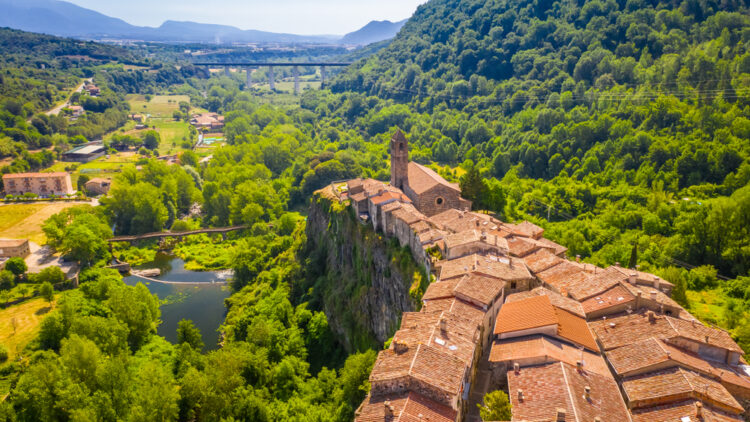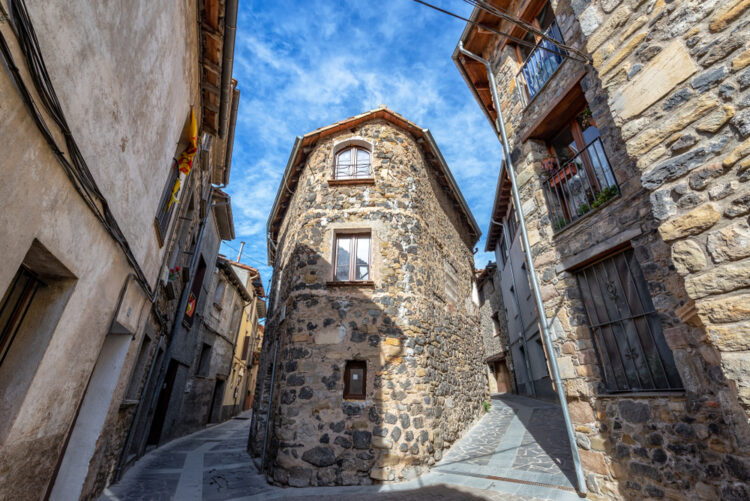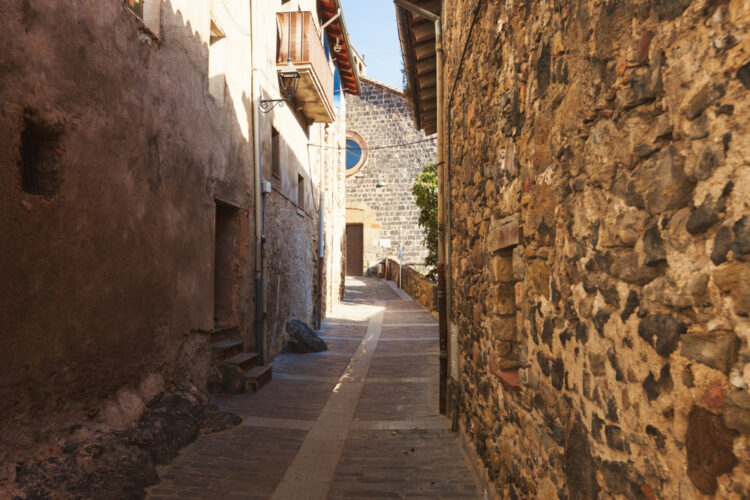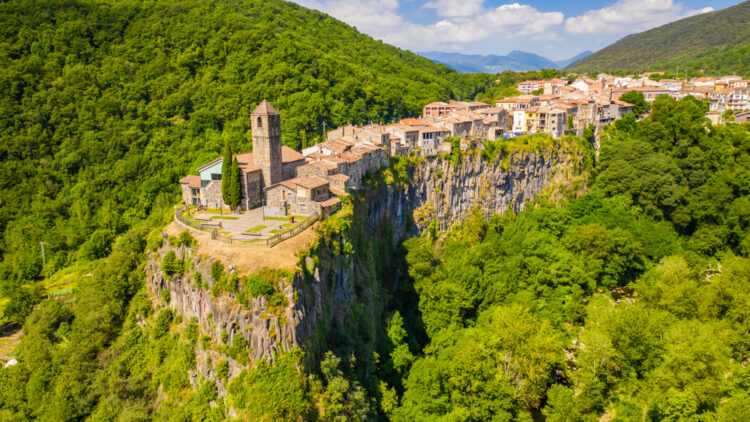Castellfollit de la Roca is one of the smallest towns in Catalonia, Spain, but the views it offers is nothing short of dramatic. This remarkable village is precariously perched on the top of a slender basalt crag rising 160 feet above the Fluvià and Toronell rivers flowing below. Stretching nearly a kilometer in length, the basalt cliff that forms the foundation of Castellfollit de la Roca is the result of volcanic activity. The area was subject to intense volcanic eruptions that occurred over 217,000 years ago, which led to the flowing and cooling of lava. Over time, this lava hardened into distinct columns of basalt rock through a process known as columnar jointing.

Historically, the town’s strategic position atop a high basalt cliff made it a formidable natural fortress, ideal for defense during turbulent times. During the Middle Ages regional conflicts and invasions were frequent. The earliest recorded settlement dates back to the Middle Ages, but the area has seen human activity for much longer, evidenced by various archaeological finds. The decision to establish the town in such an unusual and seemingly precarious location was primarily driven by defense needs. In the past, the height provided a significant advantage against invaders, offering residents a haven that was easy to defend but difficult to attack. Furthermore, the great height of the town provided panoramic views and allowed for early spotting of potential threats, a valuable asset before modern surveillance and communication technologies.
While the location offers stunning views and historical appeal, it also comes with unique challenges. The limited space available on the narrow cliff means that property sizes are generally small, the streets narrow, and expansion possibilities are restricted. Many of the homes are constructed of the same volcanic rock on which the town sits. The height and isolation can pose issues during adverse weather conditions, with access roads potentially becoming slippery and dangerous. Ensuring stability and preventing erosion of the cliff are constant concerns for the local government and residents.

Castellfollit de la Roca has a small population, just over 1,000 inhabitants. The community is tightly knit, with families that have lived in the area for generations. Providing modern amenities in such a setting involves creative solutions, particularly with regard to infrastructure like plumbing and electricity, which must be adapted to the unique landscape. The town is served by local water sources, including wells and water collected from the nearby rivers. Modern water purification and distribution systems ensure that residents have access to clean and safe drinking water.
The town experiences a Mediterranean climate, with mild, wet winters and hot, dry summers. Wintering in Castellfollit de la Roca can be particularly challenging due to the moist climate, which leads to damp conditions. Residents prepare for the colder months by insulating homes and maintaining heating systems that can cope with the humidity and the cold.

Near the historic center is an area with small gardens, tended by village residents and bordered by stone walls. A walking path meanders beside these gardens showcasing the striking basalt cliff. Visitors can observe channels and sluices that historically directed water to the factories to generate hydroelectric power. The Church of Saint Salvador, the Sant Roc Chapel, and the former Town Hall building contribute to the town’s architecture. There are several plazas and open spaces where children can play, and adults can relax. Castellfollit de la Roca is adjacent to the Garrotxa Volcanic Area Nature Reserve, providing a number of excellent hiking opportunities.
Day trips to Castellfollit de la Roca and other medieval villages in Catalonia are available from Barcelona.


